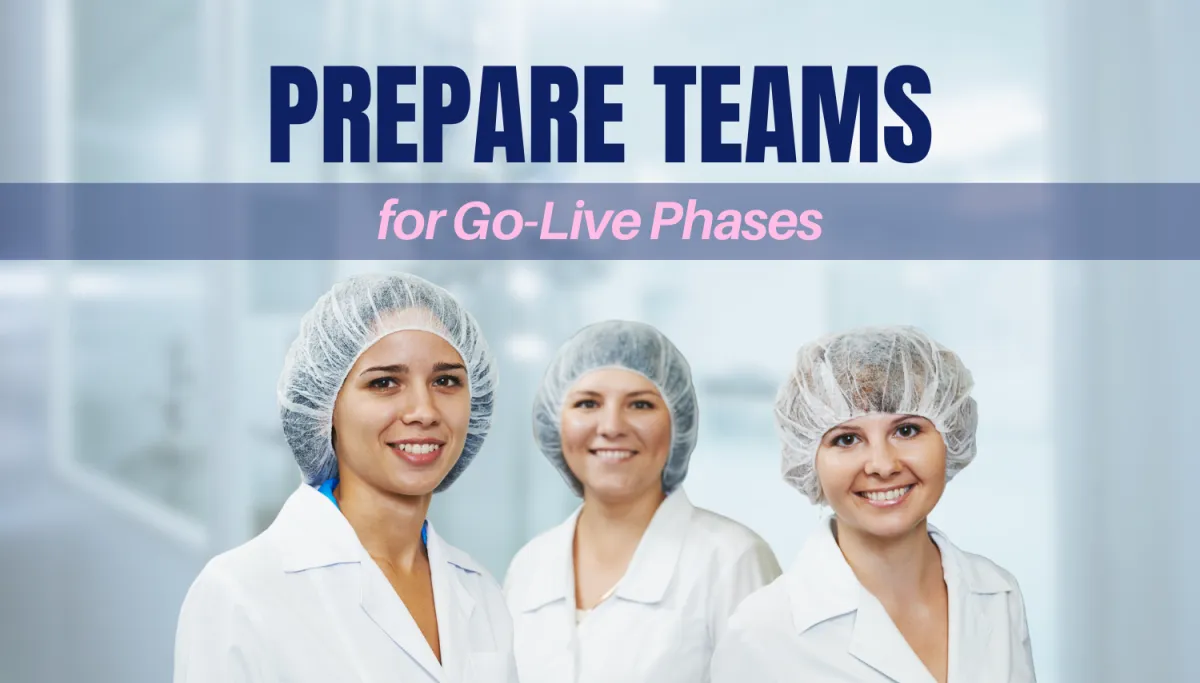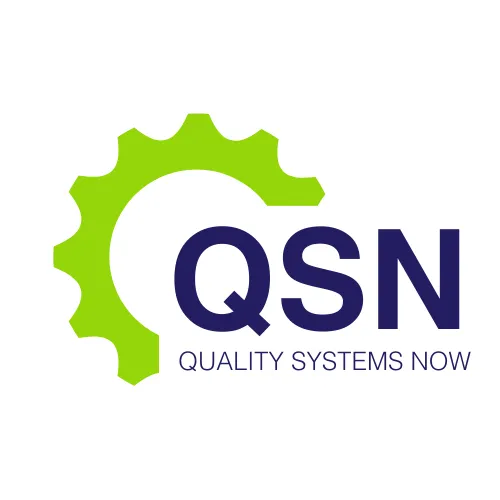NEWS

Prepare Teams for Go-Live Phases
The transition from project planning to operational reality in regulated environments such as pharmaceutical manufacturing, biotechnology, and therapeutic goods production is often marked by a critical milestone: the Go-Live phase. This is the moment when new systems, processes, or technologies move from development and validation into active use. For companies operating under strict Good Manufacturing Practice (GMP) frameworks, a successful Go-Live is not just about functionality—it is about ensuring continuity, compliance, and control.
At QSN Academy, the training division of Quality Systems Now, we support organisations to prepare their teams comprehensively for Go-Live phases. Whether deploying a new electronic quality management system (eQMS), upgrading laboratory software, or implementing a validated manufacturing process, targeted training is essential to mitigate operational risks and ensure regulatory compliance from day one. This article explores the key principles and strategies for preparing teams to execute Go-Live phases effectively in GMP-regulated environments.
The Compliance Criticality of Go-Live Phases
From a regulatory perspective, Go-Live marks the beginning of a new operational state that must be fully validated and compliant. At this point, any deficiency in training, documentation, system configuration, or process understanding can have severe consequences, including:
Non-conformance to approved procedures
Data integrity breaches
Deviations or batch failures
Audit findings or warning letters
Loss of stakeholder confidence
According to PIC/S Guide to GMP PE009-17, systems and processes must be qualified prior to use, and personnel must be trained in their responsibilities and in the relevant systems. As such, the Go-Live phase must be supported by structured, risk-based training interventions that confirm operational readiness and user competence.
Key Challenges in Go-Live Transitions
Go-Live phases are inherently high-risk because they involve a shift from controlled testing environments into real-world operations. Common challenges include:
Inadequate user training or delayed access to systems
Poor communication between implementation and operations teams
Misalignment between SOPs and actual workflows
Resistance to change or fear among users
Lack of clarity around new responsibilities
These challenges, if not addressed, can result in production stoppages, regulatory non-compliance, or unplanned corrective actions. Preparing the team in advance—both technically and psychologically—is essential to a smooth Go-Live.
Elements of a Successful Go-Live Training Strategy
Role-Specific Readiness
Generic training programs are insufficient for Go-Live. Each role must receive training that is specific to its functional responsibilities within the new system or process. For example:
A Quality Assurance officer may need to understand review workflows, deviation routing, and electronic signatures.
A production operator may require hands-on training in new equipment use, batch recording interfaces, and line clearance protocols.
A systems administrator must know how to monitor system performance and manage user roles securely.
At QSN Academy, we design role-specific Go-Live readiness matrices that ensure all users receive the training relevant to their tasks and risk exposure.
SOP Alignment and Walkthroughs
Standard operating procedures must be finalised and trained before Go-Live. A common cause of confusion during transitions is inconsistency between SOPs and actual system functions. To avoid this:
Conduct SOP walkthroughs using live systems or training environments.
Validate that all steps are executable as written.
Collect feedback and issue controlled updates before Go-Live.
This ensures users follow compliant processes from the outset and builds trust in the system.
Simulated Scenarios
One of the most effective training tools for Go-Live readiness is the use of simulated scenarios. These can include:
Mock batch executions
Simulated deviation handling
Validation document completion
Data entry and review processes
Simulations expose knowledge gaps and help reinforce procedural understanding. They also provide safe environments for learning prior to the regulatory consequences of real-time operation.
Change Management and Communication
Resistance to new systems is a natural human response, especially in high-pressure GMP environments. Clear, proactive communication is essential to preparing staff for change. This includes:
Briefings on the business case and benefits of the change
Regular updates on progress and timelines
Visibility of leadership support
Opportunities for questions and feedback
Change management is not just a communication task—it’s a compliance task. Resistance and confusion during Go-Live increase the likelihood of procedural errors and audit failures.
Competency Sign-Offs
In GMP environments, user access to new systems or processes should be conditional on documented evidence of training and demonstrated competence. Best practices include:
Observational sign-offs by supervisors
Completion of system-based quizzes or assessments
Traceable training records aligned with SOPs
Validation that users understand data integrity principles
Only competent, qualified individuals should be authorised to operate within validated systems.
Case Study: GMP Manufacturing Site Go-Live
A large-scale therapeutic goods manufacturer in Australia was preparing to Go-Live with a new eQMS platform. QSN Academy worked with their QA and implementation teams to design and deliver a staged training program:
Over 150 staff trained across 12 unique roles
Live simulations of deviation processing and CAPA workflows
SOP alignment workshops and pre-Go-Live verification
Daily check-ins and floor support during the first two weeks post-Go-Live
The Go-Live was completed on schedule with zero deviations in the first 30 days and full audit readiness within eight weeks.
Tips for Go-Live Training Execution
Plan Early: Begin training development during the system design phase, not at the end.
Use Blended Methods: Combine eLearning, instructor-led training, job aids, and simulations.
Appoint Training Champions: Identify super users in each department who can mentor peers during Go-Live.
Monitor Real-Time Performance: Set up floor support or a “Go-Live Command Centre” for troubleshooting.
Review and Adjust: Collect feedback and refine training content post-Go-Live.
Conclusion
Go-Live is not simply the activation of a system—it is a compliance-critical milestone that demands careful preparation, structured training, and active change management. Failure to adequately prepare teams for Go-Live can result in regulatory breaches, operational disruptions, and long-term system underperformance.
At QSN Academy, we support GMP-regulated organisations with science-based, role-specific Go-Live training that ensures operational readiness and audit compliance. Our expertise in adult learning, quality systems, and regulatory expectations enables us to deliver training that drives successful outcomes across laboratories, manufacturing lines, and quality departments.
Preparing your team is not just a task—it's a strategic imperative. Let QSN Academy help you build the confidence and capability your workforce needs to make your Go-Live not only a launch—but a success. Visit www.qsnacademy.com.au to learn more or request a tailored training solution.
